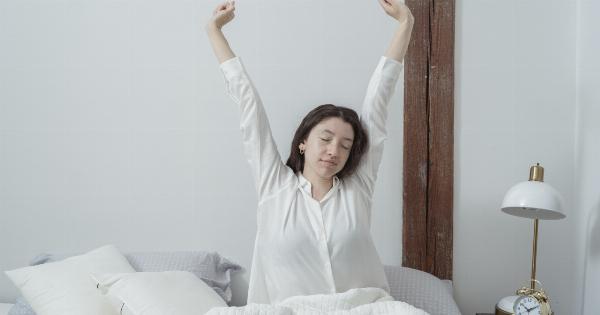Migraines are intense and debilitating headaches that can last for hours or even days. They commonly occur with additional symptoms such as nausea, sensitivity to light and sound, and visual disturbances.
While the pain associated with migraines is often the most notable aspect, there are a variety of physical symptoms that accompany these attacks. Understanding and recognizing these symptoms can help individuals manage their migraines more effectively.
1. Aura
Aura is a common symptom that occurs before or during a migraine attack. It is characterized by a variety of neurological symptoms that can affect a person’s vision, speech, and sensory perception.
Visual disturbances are the most common type of aura, leading to the appearance of flashing lights, zigzag patterns, or blind spots in the individual’s field of vision. Some people may also experience tingling or numbness in their face, hands, or legs during an aura.
2. Throbbing Headache
The hallmark symptom of a migraine attack is a throbbing or pulsating headache, typically on one side of the head. This headache can be intense and incapacitating, making it difficult for individuals to perform their daily activities.
The severity of the headache varies from person to person and can range from mild to severe. It may worsen with physical activity or exposure to light and noise.
3. Nausea and Vomiting
Nausea and vomiting are common symptoms that accompany migraines, often making individuals feel even more uncomfortable during an attack. This gastrointestinal distress can be quite severe and may persist throughout the duration of the migraine.
Some individuals may experience a loss of appetite or an aversion to certain foods during a migraine.
4. Sensitivity to Light
Photophobia, or sensitivity to light, is another common physical symptom of migraines. Excessive exposure to light can worsen the headache and intensify other symptoms.
Many individuals with migraines seek out dark, quiet rooms to find relief from their symptoms.
5. Sensitivity to Sound
Similar to sensitivity to light, individuals experiencing a migraine attack may also become highly sensitive to sound. Even normal sounds like conversations, music, or environmental noise can become overwhelming and painful.
This symptom is known as phonophobia and may persist throughout the duration of the migraine.
6. Dizziness and Vertigo
Dizziness and vertigo are physical symptoms that can occur before, during, or after a migraine attack.
Some individuals may experience a spinning sensation or a feeling of lightheadedness, making it challenging to maintain balance or perform daily tasks. These symptoms can be particularly debilitating and may persist even after the headache subsides.
7. Fatigue and Weakness
Migraines can leave individuals feeling extremely fatigued and weak, even after the attack has resolved. The intense pain and associated symptoms can be physically exhausting, making it important for individuals to rest and recuperate after an episode.
The fatigue and weakness may last for several days, impacting daily functioning.
8. Cognitive Impairment
During a migraine attack, individuals may experience cognitive impairment, commonly referred to as “brain fog.” This can manifest as difficulty with concentration, memory problems, or confusion.
Many people find it challenging to engage in complex mental tasks or even hold a conversation during a migraine. These cognitive symptoms can significantly disrupt daily life.
9. Stiffness in the Neck and Shoulders
Some individuals may experience muscle stiffness and tension in the neck and shoulders during a migraine attack. This can contribute to additional discomfort and may be a result of referred pain from the headache itself.
Gentle stretching exercises or applying heat to the affected areas can provide temporary relief.
10. Pallor
During a migraine attack, some individuals may experience a noticeable change in skin color. Pallor, or paleness, can occur due to changes in blood flow or vasoconstriction. The face and extremities may appear noticeably lighter or even slightly blue.
This symptom typically resolves once the migraine attack subsides.




























